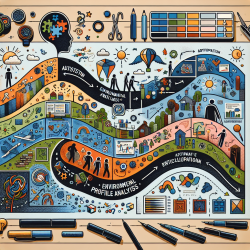Introduction
In the quest to enhance children's health and development, understanding and promoting physical activity is paramount. The recent study titled "Development and validation of the Global Adolescent and Child Physical Activity Questionnaire (GAC-PAQ) in 14 countries: study protocol" provides a robust framework for assessing and improving physical activity levels among children and adolescents globally. This blog explores how practitioners can leverage the findings and methodologies from this research to foster better outcomes for children.
Understanding the GAC-PAQ
The GAC-PAQ represents a significant advancement in the global surveillance of physical activity among children and adolescents. Developed and validated across 14 diverse countries, this tool addresses the limitations of previous questionnaires by ensuring cultural relevance and inclusivity. It incorporates domains such as active play, which are crucial yet often overlooked in traditional assessments.
Key Insights for Practitioners
Practitioners can utilize the insights from the GAC-PAQ study to enhance their interventions and strategies. Here are some actionable steps:
- Embrace Cultural Relevance: Tailor physical activity programs to reflect the cultural and socio-economic contexts of the children you serve. This approach can increase engagement and effectiveness.
- Incorporate Active Play: Recognize the importance of active play as a vital component of physical activity. Encourage unstructured playtime, which supports physical, social, and cognitive development.
- Utilize Data for Tailored Interventions: Use the GAC-PAQ to gather data on physical activity patterns and preferences. This information can guide the development of personalized interventions that address specific needs and barriers.
Encouraging Further Research
The GAC-PAQ study highlights the need for ongoing research to refine and expand our understanding of children's physical activity. Practitioners are encouraged to contribute to this body of knowledge by:
- Participating in Collaborative Studies: Engage in research collaborations that utilize the GAC-PAQ to explore new dimensions of physical activity and its impact on child development.
- Sharing Findings: Disseminate insights and outcomes from your practice to inform and inspire others in the field.
Conclusion
By integrating the findings from the GAC-PAQ study into practice, practitioners can play a pivotal role in promoting healthier lifestyles and better developmental outcomes for children. The journey towards improved physical activity is a collaborative effort that requires data-driven decisions and a commitment to continuous learning.
To read the original research paper, please follow this link: Development and validation of the Global Adolescent and Child Physical Activity Questionnaire (GAC-PAQ) in 14 countries: study protocol.










